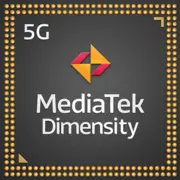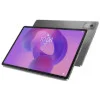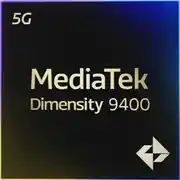MediaTek Dimensity 8300

MediaTek Dimensity 8300: A Balance of Power and Efficiency in the Mid-Range Segment
April 2025
Introduction
In the world of mobile technology in 2025, MediaTek continues to strengthen its position by offering solutions that combine high performance and affordability. One such example is the Dimensity 8300 processor, designed for mid-range and premium smartphones. This chip shows impressive results in benchmarks (AnTuTu 10 – 1.5 million points) and supports modern communication standards. In this article, we will discuss who the Dimensity 8300 is suitable for, what tasks it can handle, and how competitive it is.
Architecture and Manufacturing Process: The Foundation of Efficiency
The Dimensity 8300 is built on a 4nm manufacturing process, which ensures low power consumption and a high transistor density. The CPU architecture includes 8 cores, divided into two clusters:
- High-Performance Cores: 4 Cortex-A715 cores with a frequency of up to 3.35 GHz for resource-intensive tasks.
- Energy-Efficient Cores: 4 Cortex-A510 cores with a frequency of 2.2 GHz for background processes.
This configuration allows for optimized system performance: under light loads (social media, messaging), the low-power cores are utilized, while high-frequency cores activate for gaming or video editing.
The graphical subsystem Mali-G615 MP6 with 6 compute units supports Vulkan 1.3 and OpenGL ES 3.2 APIs, ensuring smooth visuals in games at resolutions up to 1440p and refresh rates of 120 Hz. HyperEngine 6.0 technology enhances FPS stability through dynamic resource management.
Performance in Real Tasks: From Gaming to AI
Gaming:
With the Dimensity 8300, users can comfortably run projects like Genshin Impact or Call of Duty: Mobile at high settings with FPS ranging from 50 to 60. In less demanding games (PUBG Mobile, Honkai: Star Rail), frame rates remain stable, thanks to the optimization of the Mali-G615. However, during prolonged sessions (over 40 minutes), temperatures may rise to 42–45°C, which is why smartphones featuring this chip are often equipped with liquid cooling systems.
Multimedia:
The chip decodes 8K video at 30fps and supports HDR10+ through MiraVision 890. This makes it ideal for streaming and viewing high-resolution content. On devices with AMOLED 120Hz displays (such as the Xiaomi Redmi Note 13 Pro+), animations look smooth, and color reproduction is vibrant.
Artificial Intelligence:
The built-in neural processor APU 780 accelerates tasks such as photo processing (noise reduction, scene recognition) and voice assistant functionality. For instance, capturing in night portrait mode takes 30% less time compared to the Dimensity 8200.
Energy Consumption:
Thanks to the 4nm manufacturing process and optimization of the A510 cores, the chip is energy-efficient. In mixed-use mode (4G, 120Hz, 2 hours of gaming), a smartphone with a 5000mAh battery can operate for up to 14 hours.
Integrated Modules: The Future of Connectivity
- 5G Modem: Supports SA/NSA, Sub-6 GHz bands (but not mmWave). Upload speeds of up to 4.7 Gbps.
- Wi-Fi 7: Compatibility with 320 MHz channels and speeds up to 5.8 Gbps.
- Bluetooth 5.4: Enhanced stability when connecting headphones and smartwatches.
- Navigation: GPS (L1+L5), GLONASS, Galileo, QZSS, as well as support for Iridium satellite communication for emergency messages (only in top-tier models).
These modules make the Dimensity 8300 suitable for users who value fast content loading and stable connections.
Comparison with Competitors: Where Does It Excel?
- MediaTek Dimensity 8200 (2023): The new chip is 15% faster in GPU performance and 20% more energy-efficient.
- Qualcomm Snapdragon 7+ Gen 3: Comparable in AnTuTu (~1.5 million), but Snapdragon excels in single-threaded tasks (Geekbench 6 Single-Core: 1580 vs 1506). However, the Dimensity 8300 is cheaper to integrate, which reduces smartphone prices.
- Apple A17 Bionic: A leader in Single-Core performance (2100 points), but lags in multi-threading (4800 vs 4844) and compatibility (only iPhone).
Thus, the Dimensity 8300 serves as a "golden mean" for those seeking a balance between price and performance.
Use Cases: Who Is It Suitable For?
1. Gaming: Ideal for mobile gaming enthusiasts seeking stable FPS in most titles.
2. Everyday Tasks: Fast app performance and multitasking (simultaneous streaming + chatting).
3. Photo and Video: Supports cameras up to 200 MP and 8K recording. Algorithms enhance detail and color correction.
For example: The Realme GT Neo 5 powered by the Dimensity 8300 with a 108 MP camera captures video at a flagship level for 2023.
Pros and Cons
Pros:
- High multi-threaded performance.
- Support for Wi-Fi 7 and Bluetooth 5.4.
- Energy efficiency.
Cons:
- No support for mmWave 5G.
- GPU performance is weaker than top-tier solutions (e.g., Snapdragon 8 Gen 3).
Practical Tips: How to Choose a Smartphone?
1. Cooling: Look for models with vapor chambers or graphite plates.
2. Display: AMOLED 120Hz for gaming and HDR content.
3. Battery: At least 5000mAh + 65W charging.
4. Price: Devices featuring the Dimensity 8300 range from $450 to $600 (Xiaomi, Realme, vivo).
Final Conclusion
The MediaTek Dimensity 8300 is an ideal choice for those who want a flagship experience without overspending. It is suitable for:
- Gamers who do not need ultra-settings.
- Users who value battery life and fast charging.
- Content creators filming in 4K/8K.
Key benefits include energy efficiency, support for modern connectivity standards, and reasonable pricing of devices. In 2025, smartphones featuring this chip represent a wise compromise between technology and budget.
Basic
3x 3.2 GHz – Cortex-A715
4x 2.2 GHz – Cortex-A510
GPU Specifications
Connectivity
Memory Specifications
Miscellaneous
Benchmarks
Tablets with Dimensity 8300

Comparison of Devices with Dimensity 8300
Compared to Other SoC
Share in social media
Or Link To Us
<a href="https://cputronic.com/en/soc/mediatek-dimensity-8300" target="_blank">MediaTek Dimensity 8300</a>


